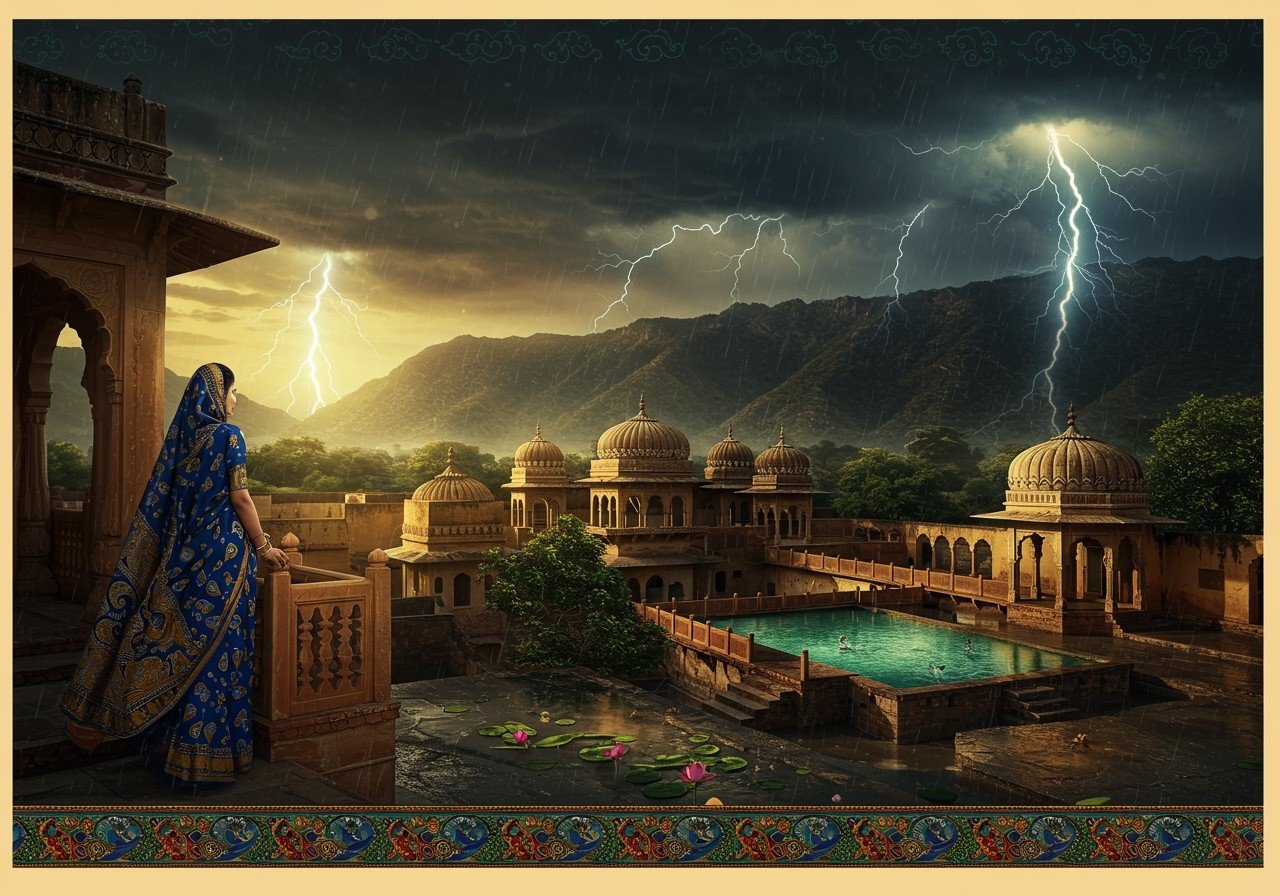
The monsoon season in Northwest India, spanning June to September, is a period of profound transformation. The region eagerly anticipates the arrival of the Southwest Monsoon, a lifeline for agriculture, water resources, and daily life. The Northeast Monsoon also contributes, albeit less significantly, later in the season.
Key Aspects of the Monsoon
- Rainfall Distribution: The region typically receives between 750 and 1,500 mm of rainfall during the monsoon season. This variability is essential for diverse crops and geographical areas within Northwest India, impacting agricultural practices and water management strategies.
- Monsoon Onset and Withdrawal: The Southwest Monsoon generally arrives in late May or early June, marking the beginning of the rainy season. It starts withdrawing from North India around early October, signaling the transition to the post-monsoon period.
- Recent Changes: Studies reveal a significant 40% increase in summer monsoon rainfall in Northwest India compared to the 1980s. This surge may be linked to intensified monsoon winds arising from a warming Indian Ocean and the influence of enhanced Pacific Ocean trade winds.
- Normal Rainfall: Rainfall within 90% to 110% of the long-period average (LPA) is considered “normal.” This benchmark is crucial for agricultural planning, water resource management, and overall economic stability in the region.
- Active/Break Spells: During July and August, the monsoon trough can shift north or south, causing fluctuations in rainfall distribution. These shifts can lead to periods of heavy downpours followed by relatively dry spells, impacting agricultural activities and water availability.
Weather Patterns During the Monsoon
The arrival of the monsoon brings a noticeable shift in weather conditions. Humidity and temperatures increase as the rainy season sets in. Pre-monsoon showers soften the ground, preparing it for planting. However, ‘break monsoons,’ characterized by intermittent rainfall, can pose challenges for water management.
The Thar Desert adds another layer of complexity to the monsoon’s impact. It can contribute to both floods and waterlogging, disrupting daily life and requiring adaptive strategies.
Winter and the Northwest Monsoon
Winter in Northwest India is closely tied to the Northwest Monsoon, influenced by the Western Disturbance. This weather system brings essential rain and snow, replenishing groundwater and supporting rabi crops such as wheat and barley.
Temperature fluctuations during winter affect agricultural practices and daily routines. The cultural significance of winter rain is reflected in local festivals and traditions.
Climate Impacts and Adaptation
Climate change has a significant impact on monsoon patterns in Northwest India, leading to more extreme weather events like floods and droughts. These erratic shifts pose threats to water resources, agriculture, and overall ecological balance.
Adaptive measures, such as improved irrigation techniques and crop diversification, are crucial for mitigating these risks. Technological advancements, including weather forecasting, play a vital role in managing monsoon variability.
Community initiatives and supportive policies are essential for addressing the challenges of climate change and promoting sustainable development.
Worship with Poojn.in
Embrace the spiritual significance of the monsoon season with authentic puja items from Poojn.in. We offer a wide selection of high-quality products to enhance your devotional practices.
- Camphor Tablets: Enhance the purity of your prayers with our 100% pure camphor tablets.
- Small Candles and Large Candles: Illuminate your sacred space with our premium quality candles, perfect for any puja.
- Maya Ghee: Use pure ghee for hawan and other rituals, ensuring authenticity and spiritual significance.
- Green Mung Dal, Supari (Areca Nut), Large Size Elaichi (Black Cardamom): Find all the essential ingredients for your puja needs at Poojn.in.
Shop Now at Poojn.in and experience the convenience of doorstep delivery for all your puja samagri.
Embracing the Monsoon’s Legacy
The monsoon in Northwest India is more than just a weather pattern; it is an integral part of the region’s cultural and economic tapestry. As the rains rejuvenate the land, they also cultivate a spirit of resilience and adaptation. By understanding the monsoon’s rhythms, communities can better prepare for its blessings and challenges, ensuring agricultural prosperity and responsible water management. The monsoon’s legacy is one of hope and renewal.
Explore more about India’s sacred sites and cultural heritage:
- Parli Vaijnath: Exploring Maharashtra’s Sacred Site
- Jyotirlingas of India: A Spiritual Journey Through Sacred Sites
- Sacred Spaces of India: A Temple Journey


